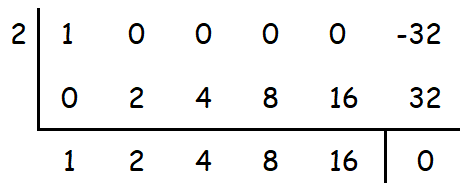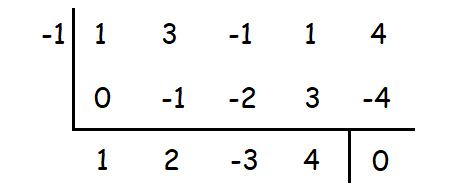EVALUATING LIMITS FOR RATIONAL FUNCTIONS
Subscribe to our ▶️ YouTube channel 🔴 for the latest videos, updates, and tips.
Evaluating Limits for Rational Functions at a Finite Value
When you evaluate limit for a rational function at a finite value, follow the steps given below.
Step 1 :
Factor the expressions in numerator and denominator.
Step 2 :
Cancel out the common factors.
Step 3 :
Substitute the given limit for the variable and evaluate it.
Evaluating Limits for Rational Functions at Infinity
When you evaluate limit for a rational function at infinity, follow the steps given below.
Step 1 :
Look at the highest exponent of the variable in the given rational function.
Step 2 :
Factor the variable with the highest exponent out in both numerator and denominator.
Step 3 :
Simplify and evaluate the limit.
Example 1 :
Solution :
Example 2 :
Solution :
Example 3 :
Solution :
Example 4 :
Solution :
Example 5 :
Solution :
Example 6 :
Solution :
Example 7 :
Solution :
Example 8 :
Solution :
Using the following algebraic identity, (x3 - 8) can be factored.
a3 - b3 = (a - b)(a2 + ab + b2)
Example 9 :
Solution :
Example 10 :
Solution :
Since (x - 2) is the denominator of the given rational function, one of the factors of (x5 - 32) may be (x - 2).
We can check this by dividing (x5 - 32) by (x - 2) using synthetic division.

When we divide (x5 - 32) by (x - 2), the remainder is 0. So, (x - 2) is a factor of (x5 - 32).
The factored form of (x5 - 32) is
(x - 2)(x4 + 2x3 + 4x2 + 8x + 16)
Example 11 :
Solution :
Since (x + 1) is the denominator of the given rational function, one of the factors of (x4 + 3x3 - x2 + x + 4) may be (x + 1).
We can check this by dividing (x4 + 3x3 - x2 + x + 4) by (x + 1) using synthetic division.

When we divide (x4 + 3x3 - x2 + x + 4) by (x + 1), the remainder is 0.
So, (x + 1) is a factor of (x4 + 3x3 - x2 + x + 4).
The factored form of (x4 + 3x3 - x2 + x + 4) is
(x + 1)(x3 + 2x2 - 3x + 4)
Example 12 :
Solution :
Subscribe to our ▶️ YouTube channel 🔴 for the latest videos, updates, and tips.
Kindly mail your feedback to v4formath@gmail.com
We always appreciate your feedback.
About Us | Contact Us | Privacy Policy
©All rights reserved. onlinemath4all.com
Recent Articles
-
AP Calculus BC Problems with Solutions
Dec 20, 25 10:51 AM
AP Calculus BC Problems with Solutions -
AP Precalculus Problems and Solutions (Part - 1)
Dec 20, 25 10:49 AM
AP Precalculus Problems and Solutions (Part - 1) -
AP Calculus AB Problems with Solutions (Part - 1)
Dec 20, 25 10:49 AM
AP Calculus AB Problems with Solutions (Part - 1)
